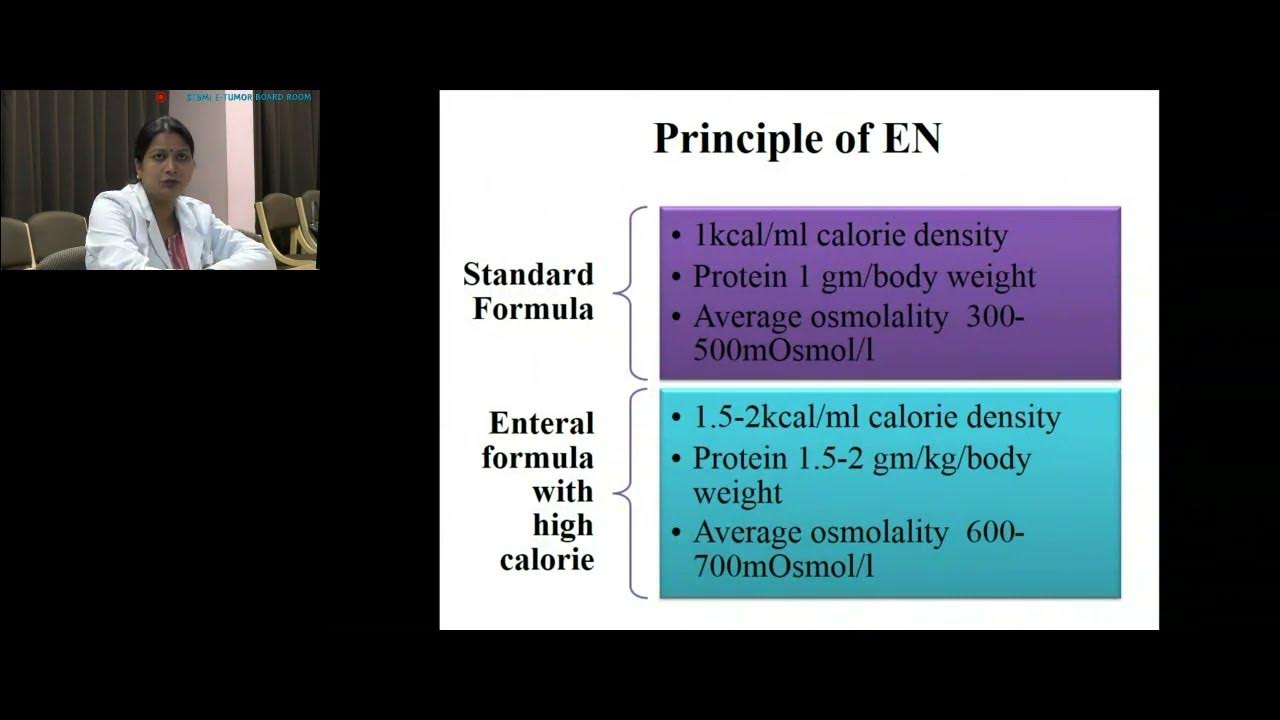AND/ASPEN Malnutrition Assessment Tool
Summary
TLDRThe Academy Aspen Tool, developed by the Academy of Nutrition and Dietetics and American Society for Parenteral and Enteral Nutrition, is a widely adopted malnutrition assessment tool in the US. It classifies malnutrition into three etiologies: acute illness/injury, chronic disease, and social/environmental factors. The tool evaluates six clinical characteristics to diagnose malnutrition, with varying benchmarks for each etiology and severity. Despite its simplicity and quick results, the tool has limitations, including subjective interpretations and reliance on fluid accumulation as a criterion.
Takeaways
- 📚 The Academy Aspen Tool was developed by the Academy of Nutrition and Dietetics and the American Society for Parenteral and Enteral Nutrition to standardize malnutrition assessment and diagnosis.
- 🌟 It is widely adopted as the primary malnutrition assessment tool in the United States, with a high usage rate among professionals.
- 🔍 The tool is etiology-based, meaning it considers both the presence and the cause of malnutrition to guide treatment and prevention strategies.
- 🏥 The etiologies identified are acute illness or injury, chronic disease, and social or environmental circumstances, each with distinct time frames and inflammatory responses.
- 🚑 Acute conditions like major infections, burns, and trauma cause a marked inflammatory response leading to rapid weight and muscle loss.
- 🏠 Chronic diseases such as end-stage renal disease and COPD have a slower impact on nutrition due to mild to moderate inflammatory responses.
- 🌐 Social and environmental factors like food insecurity and eating disorders can lead to malnutrition without an inflammatory response.
- 📏 The tool uses six clinical characteristics to assess malnutrition: energy intake, weight loss, loss of subcutaneous fat, muscle loss, fluid accumulation, and reduced grip strength.
- 📈 Each characteristic has specific parameters for moderate and severe malnutrition, with different benchmarks for each etiology.
- 📋 Diagnosis requires meeting only two of the criteria, and the tool's simplicity and quick results are advantages over more complex methods.
- 🔬 Despite its advantages, the tool has limitations, including reliance on subjective interpretations of disease burden and muscle loss, and the use of fluid accumulation as a criterion.
Q & A
What is the purpose of the Academy ASPEN Malnutrition Assessment Tool?
-The Academy ASPEN Malnutrition Assessment Tool was created to provide a consistent method for identifying and diagnosing malnutrition, helping to standardize clinical practice and improve data organization for malnutrition research.
Why was the Academy ASPEN Tool introduced in 2012?
-The tool was introduced to create more consistency in diagnosing malnutrition in clinical practice and to provide a structured approach for researchers and healthcare providers.
What are the three etiologies of malnutrition established by the Academy ASPEN Tool?
-The three etiologies are: (1) Acute illness or injury, (2) Chronic disease, and (3) Social or environmental circumstances. These etiologies differ by time and degree of inflammatory response.
How do acute illness and chronic disease differ in the context of malnutrition?
-Acute illness or injury is associated with a marked inflammatory response and typically leads to rapid weight and muscle loss. Chronic disease, on the other hand, is linked to a mild to moderate inflammatory response, leading to slower malnutrition over months or years.
What are examples of acute illness and chronic diseases that may lead to malnutrition?
-Examples of acute illness include major infections, burns, and trauma. Chronic diseases that may cause malnutrition include end-stage renal disease, COPD, HIV, and end-stage liver disease.
What are the six clinical characteristics used to assess malnutrition according to the Academy ASPEN Tool?
-The six characteristics are energy intake, weight loss, loss of subcutaneous fat, muscle loss, fluid accumulation, and reduced grip strength.
How does the tool differentiate between moderate and severe malnutrition?
-Moderate and severe malnutrition are differentiated by specific criteria based on weight loss and muscle depletion, which vary depending on the etiology. For example, in acute illness, moderate malnutrition is defined by 7.5% body weight loss in three months, while severe malnutrition involves greater than 7.5% weight loss.
What advantages does the Academy ASPEN Tool offer in clinical practice?
-The tool is easy to use, provides clear criteria for diagnosing malnutrition, can be performed quickly at the bedside, and does not require advanced calculations or expensive technology like lab tests or machines.
What are some limitations of the Academy ASPEN Tool?
-Limitations include the reliance on subjective interpretation of disease burden and fat/muscle loss, the lack of objective parameters for inflammation, and the potential misuse of fluid accumulation as an indicator of malnutrition in cases where it might be unrelated.
How should malnutrition diagnoses be documented in medical records?
-When documenting malnutrition, both the etiology (e.g., chronic disease or acute illness) and severity (e.g., moderate or severe) should be noted, along with the specific findings used to support the diagnosis, such as weight loss or muscle depletion.
Outlines

This section is available to paid users only. Please upgrade to access this part.
Upgrade NowMindmap

This section is available to paid users only. Please upgrade to access this part.
Upgrade NowKeywords

This section is available to paid users only. Please upgrade to access this part.
Upgrade NowHighlights

This section is available to paid users only. Please upgrade to access this part.
Upgrade NowTranscripts

This section is available to paid users only. Please upgrade to access this part.
Upgrade Now5.0 / 5 (0 votes)





